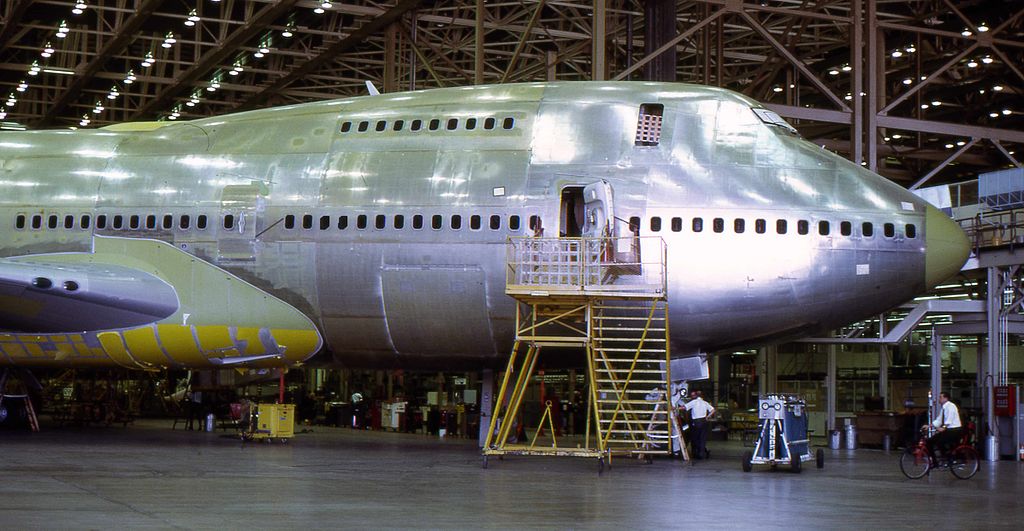Aerospace
Boeing’s iconic 747 will leave the factory for the last time.

The final three 747 aeroplanes will leave Boeing’s facility in Everett, Washington, by the end of 2022.
By the end of the year, Atlas Air should have received the final 747 and three 747-8Fs that are similar to it. (Two ex-Transaero 747-8s are presently being transformed for the Pentagon into military variants to operate as Air Force One.)
The first 747 was rolled out of the Everett Plant, the largest structure by volume in the world, on September 30, 1968. The 747 was certified in December of the same year after its inaugural flight on February 9 of that year. On January 22, 1970, Pan Am began using it. The 747 was the first wide-body, or “Jumbo Jet,” aircraft.
Airbus produced the A380, a version of its jumbo aircraft, after the Boeing 747, but due to a lack of demand, that aircraft was withdrawn from manufacturing. Airlines constantly assess their capacity needs; if they are too high, it will be difficult for them to continue operating.
The big news serves as a reminder that a new era is about to expire. Few aircraft have altered the industry as much as this one.
The first widebody aircraft opened the door to international travel for innumerable individuals all over the world beginning with its entrance into service as a passenger variant with Pan Am in 1970.
The 747-200, which had the nose door that facilitated the loading of big goods, was the first widebody freighter to be delivered to Lufthansa on March 10, 1972, and this year honours the 50th anniversary of that event.
The Boeing 747 8F model, which is nearly 18 feet longer and can carry 16 percent more revenue payload space, is the replacement for the 747 400F variant. Half of a 747 can be constructed in approximately a month, and a full jumbo jet can be built in about two months. Boeing has built and delivered a total of 1,569 747s during the past 50 years.
A widebody twin-engine Boeing 777-8F that has nearly the same capacity as a 747-400F while using less fuel is currently being developed. But it’s safe to say that the Queen of the Skies is a unique aircraft that will never be matched. Without a doubt, Boeing broke the world record by building enormous aircraft during a time when there were fewer technological resources available.

Aerospace
Boeing Transfers Rocket Stage to NASA, Paving Way for Human Moon Mission

Boeing has achieved a significant milestone by providing NASA with the second core stage of the Space Launch System (SLS) rocket.
This crucial component, crafted at NASA’s Michoud Assembly Facility (MAF), is set to propel the Artemis II crew into lunar orbit, marking humanity’s return to deep space after a 50-year hiatus.
The monumental Boeing-built rocket stage, the largest element of the Artemis II mission, will embark on a journey aboard the Pegasus barge, traveling 900 miles to NASA’s Kennedy Space Center.
Comparison of two legendary aircraft B777x vs B747 aircraft:Click here
Upon arrival, it will be meticulously integrated with other essential Artemis II components, including the upper stage, solid rocket boosters, and NASA’s Orion spacecraft within the iconic Vehicle Assembly Building. This intricate integration process is a vital step toward the eagerly anticipated Artemis II launch, slated for 2025.
“Boeing-built products helped land humankind on the moon in 1969, and we’re proud to continue that legacy through the Artemis generation,” remarked Dave Dutcher, vice president and program manager for Boeing’s SLS program. “Together, with NASA and our industry partners and suppliers, we are building the world’s most capable rocket and paving the way to deep space through America’s rocket factory in New Orleans.”
NASA, Lockheed Martin Reveal X-59 Quiet Supersonic Aircraft:Click here
The delivery of Core Stage 2 marks a significant achievement in the evolution of the SLS rocket. Towering over 200 feet and powered by four RS-25 engines, this core stage, coupled with two solid-fueled booster rockets, will generate a staggering 8.8 million pounds of thrust. This immense power is crucial to launching Artemis II and future missions into the vast expanse of space.
The SLS rocket stands unparalleled in its capability to transport both crew and substantial cargo to the moon and beyond in a single launch. Its extraordinary capacity will facilitate the delivery of human-rated spacecraft, habitats, and scientific missions to destinations including the moon and Mars, ushering in a new era of space exploration.
-

 Travel1 week ago
Travel1 week agoAir India to Expand US Operations with Three New Routes After a Decade
-

 Travel2 weeks ago
Travel2 weeks agoWhy We Should Avoid These Stamps in a Passport
-

 Airlines1 month ago
Airlines1 month agoInvestigations Reveal Fake Chinese Titanium in Boeing and Airbus Jets
-

 Tech4 weeks ago
Tech4 weeks agoChina’s CATL Plans 1,800-Mile Electric Plane Launch by 2027
-

 Airport3 days ago
Airport3 days agoTop 10 Largest Airports in the World by Size
-

 Aerospace4 weeks ago
Aerospace4 weeks agoChina’s Fighter Jets Turn Wings into Autonomous Drones
-

 Airlines4 days ago
Airlines4 days agoAir India Rolls Out A350s for Delhi-New York JFK and Newark Routes
-

 Defence3 weeks ago
Defence3 weeks agoBoeing Enhances Chinook with New Engines and Block II Upgrades at $96 Million







